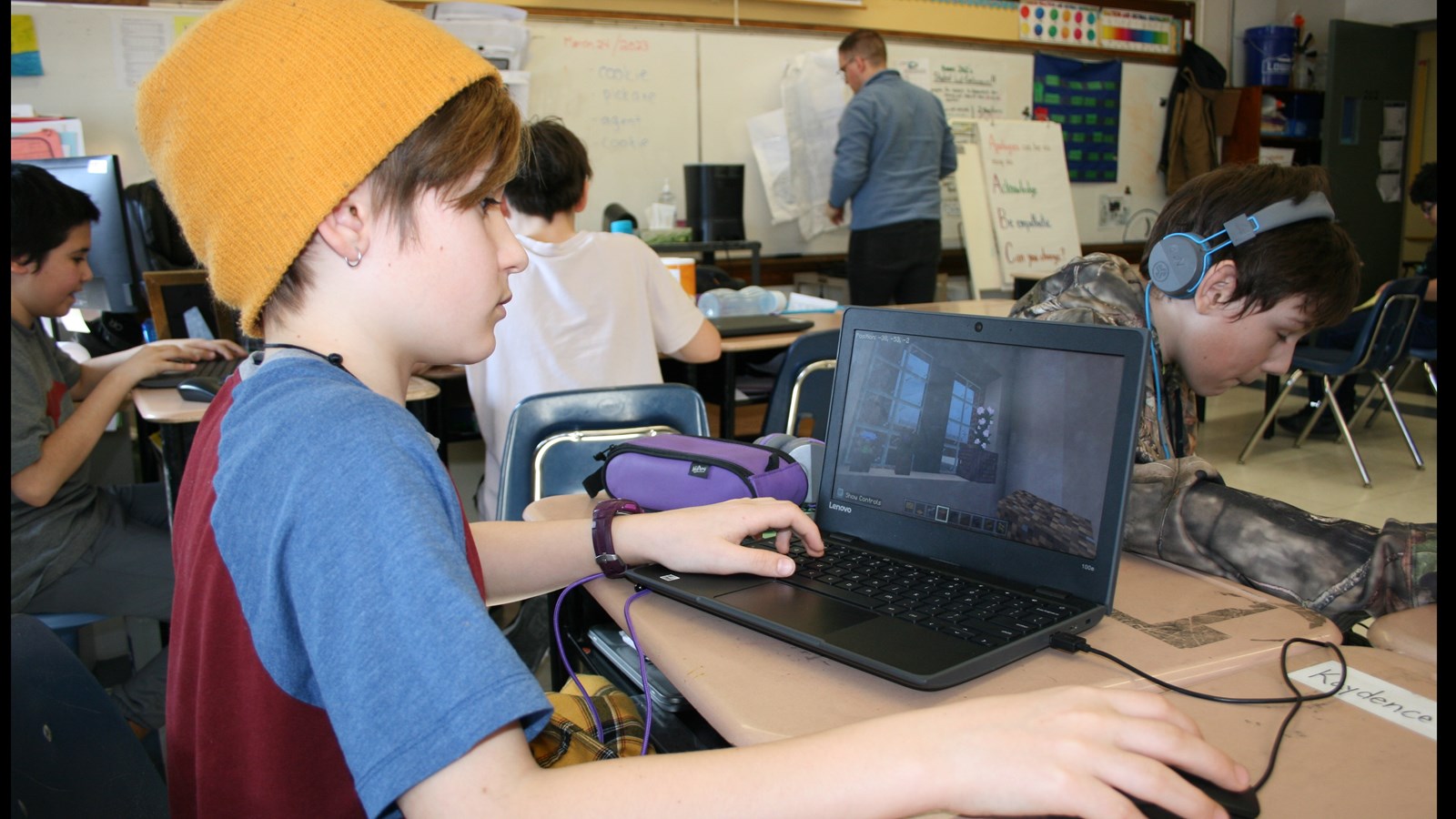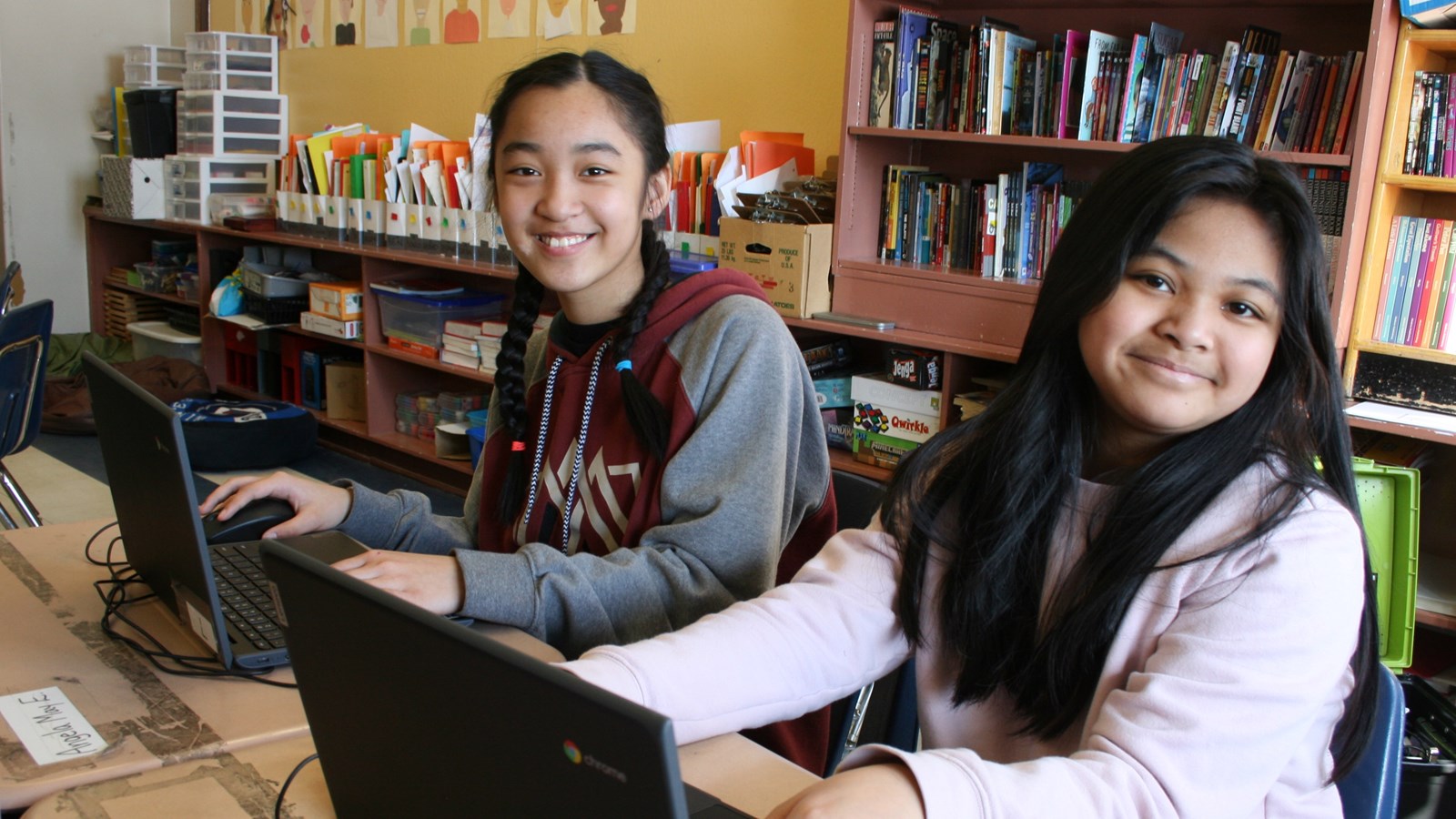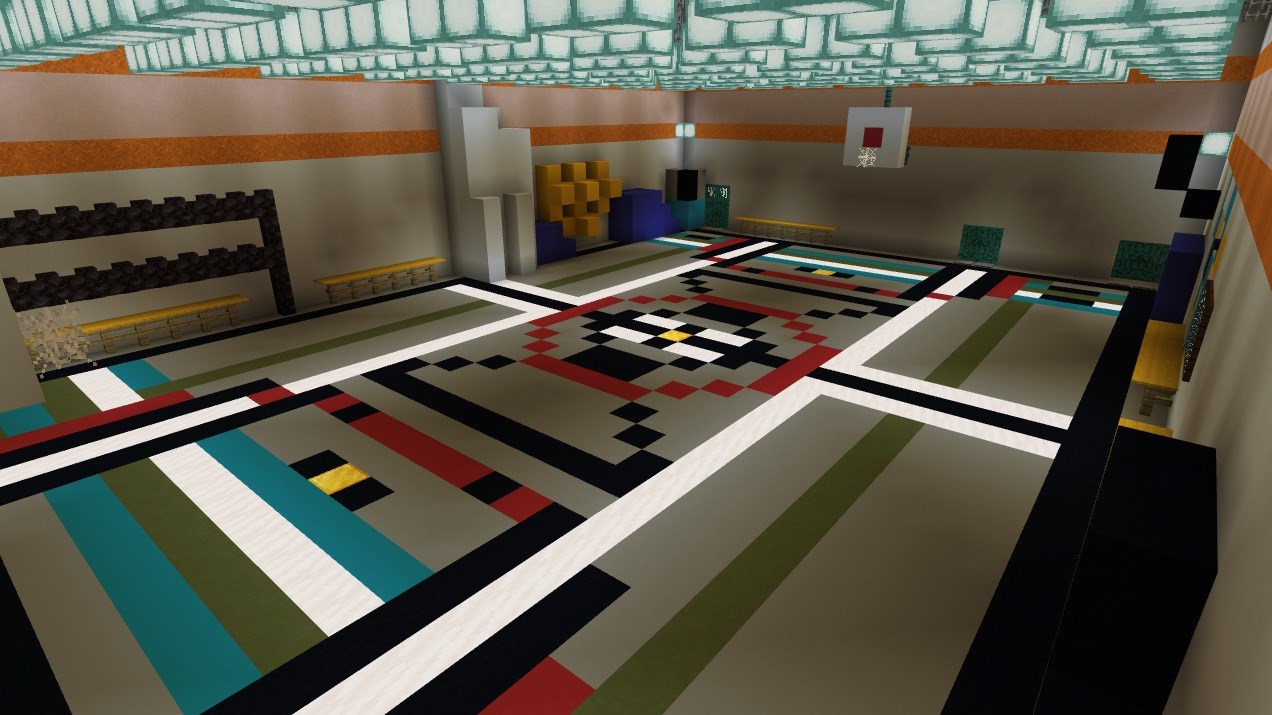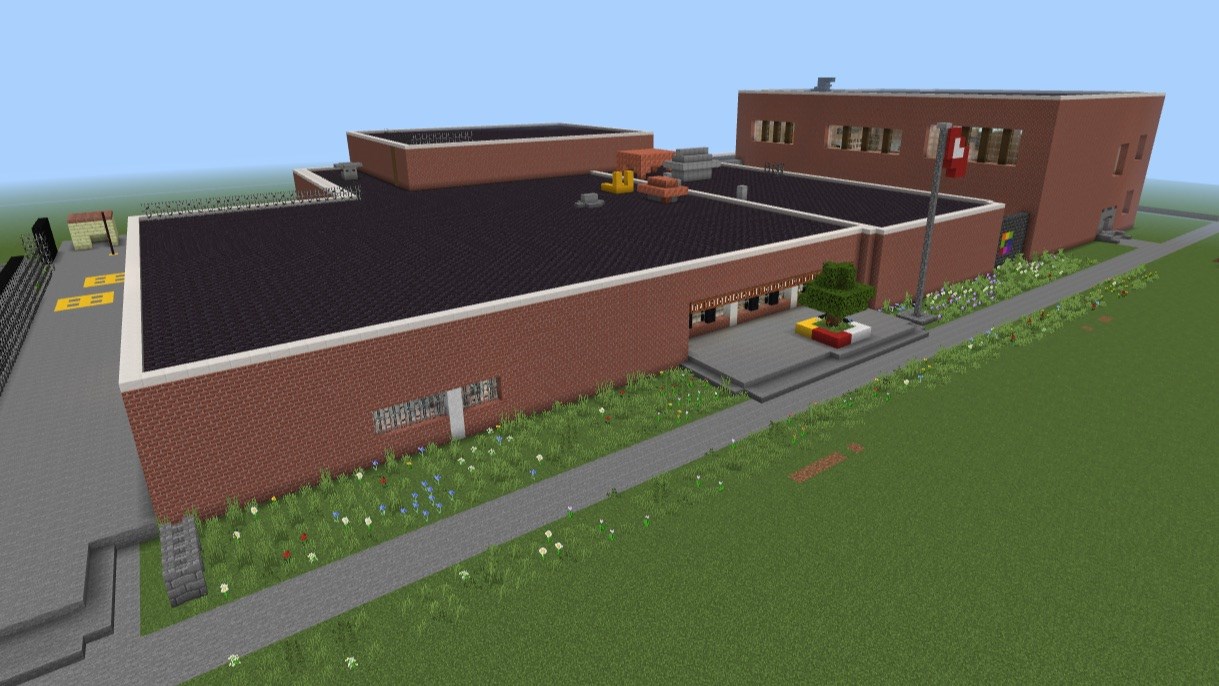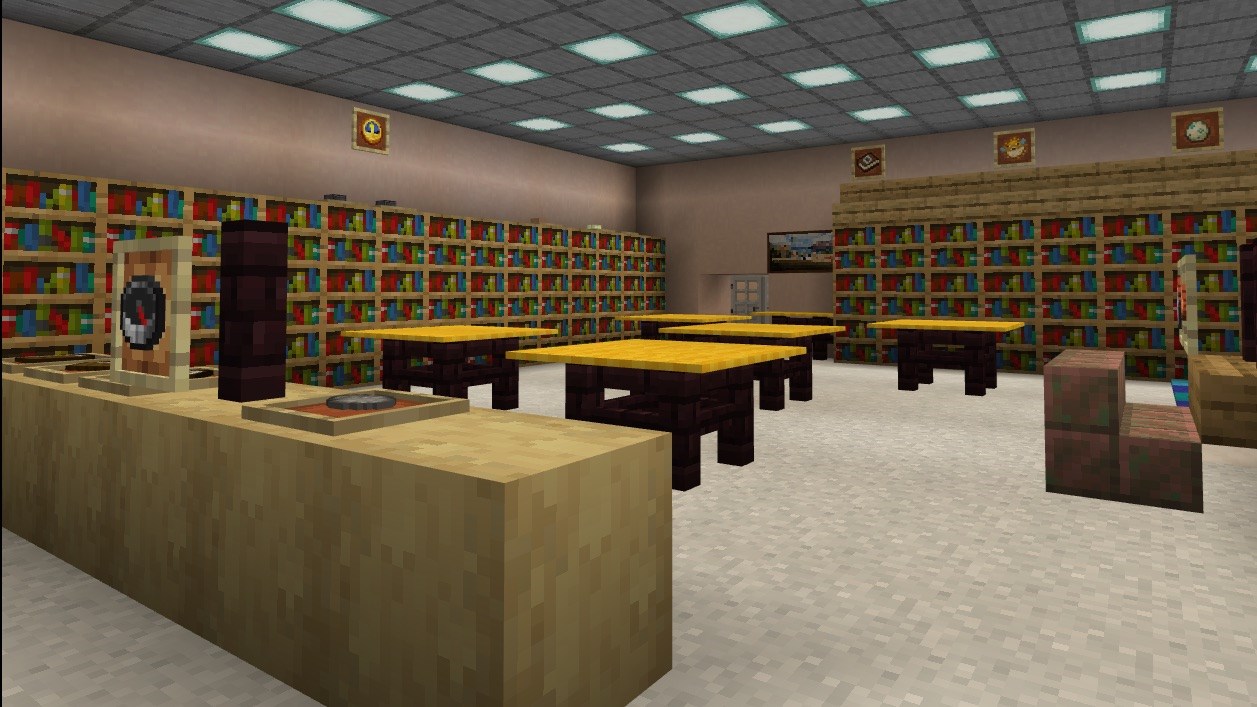River Elm makes Minecraft model of school
March 28, 2023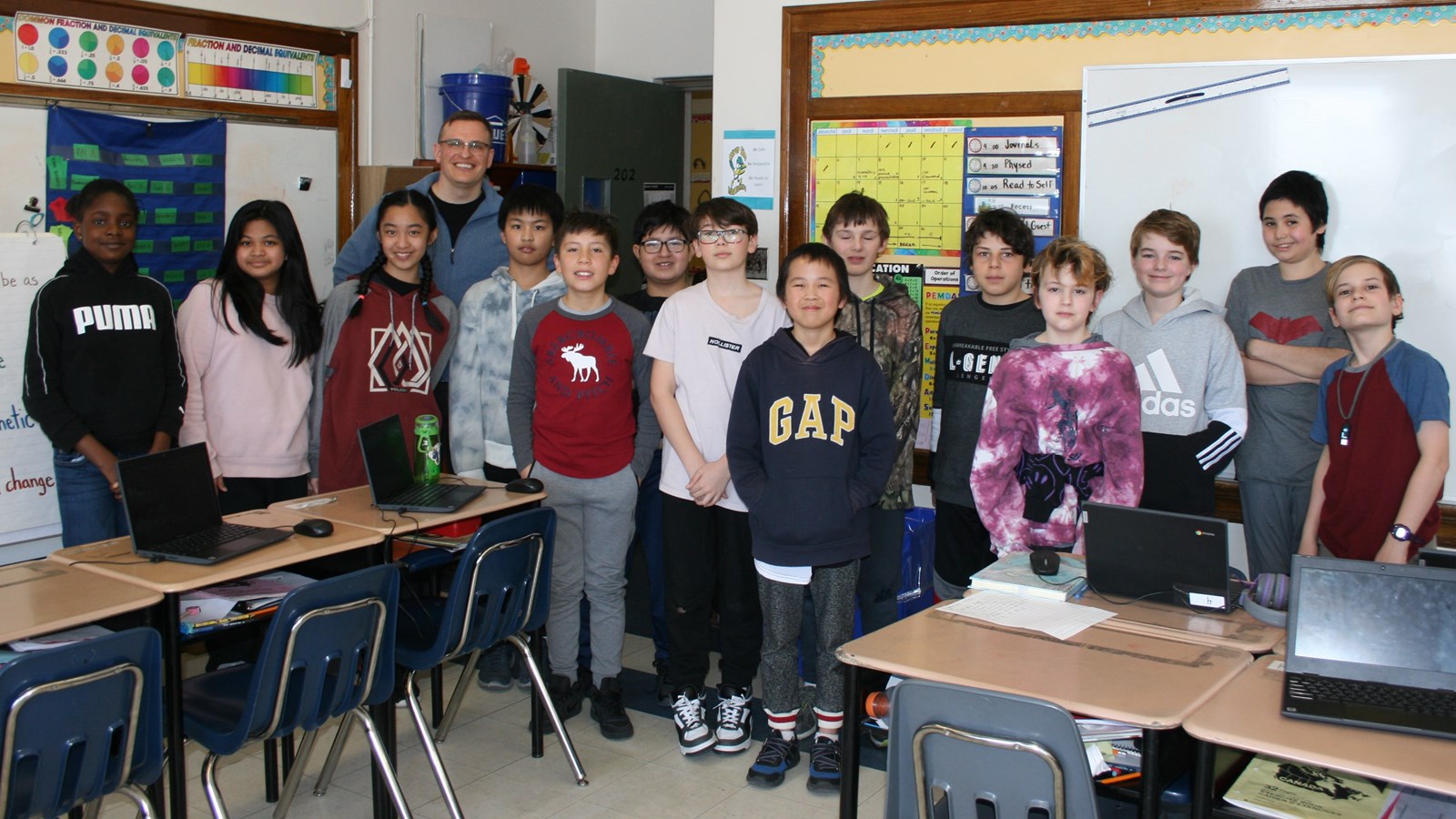
Block by block, River Elm School students built a virtual version of their own school.
Using Minecraft Education, Grade 6 students reconstructed the red-brick elementary school, which was first built in 1930 as Elmwood School, renamed River Elm in 1958 and expanded upon in 1976.
River Elm teacher Dustin Beniston said the initial plan was a “simple measuring project”, with students learning to calculate the area and perimeter of their classroom and some other rooms in the school.
“I showed the students the library I made in Minecraft and their jaws all dropped,” Beniston said. “They wanted to get started immediately and I just let them go. They all picked rooms to do. They walked around the school with cameras, taking pictures around the school. Then they’d run back to the classroom and start building in Minecraft.”
“I didn’t have to give them any information about building in Minecraft, they just started building the classrooms exactly like they are.”
Minecraft is a video game where players place and break blocks in a virtually infinite three-dimensional world. The best-selling video game in history, most of the students had been around the block a few times before.
“The students come to school with their own pre-existing technical literacy, a literacy they get by playing games,” Beniston said. “They are coming to school with a literacy that we might not be familiar with, but we can harness it and use that literacy to do something educational like this.”
Lex Zastre built the virtual school’s music room and courtyard. The Grade 6 student is not a new kid to the blocks.
“I’ve played Minecraft for awhile now. I like building things and making giant structures,” Zastre said. “It relieves stress for me. It’s peaceful. I can play with my friends sometimes, but usually I just like to put on my headphones, listen to music and just chill out.”
Angela Espino and Maxene Velasco partnered up to build the school’s computer room.
“It was a great way to learn about area and perimeter, but also have fun at the same time,” Velasco said.
“I liked how we worked in partnership and helped each other, the teamwork part of it,” Espino said.
Beniston said the project took two weeks, with the students putting in approximately 400 hours of combined work.
“If one person was working on this, it would take them months, but as a team of 24, working together in partnership and giving each other advice and constructive feedback, we’re able to get so much done together,” Beniston said.

